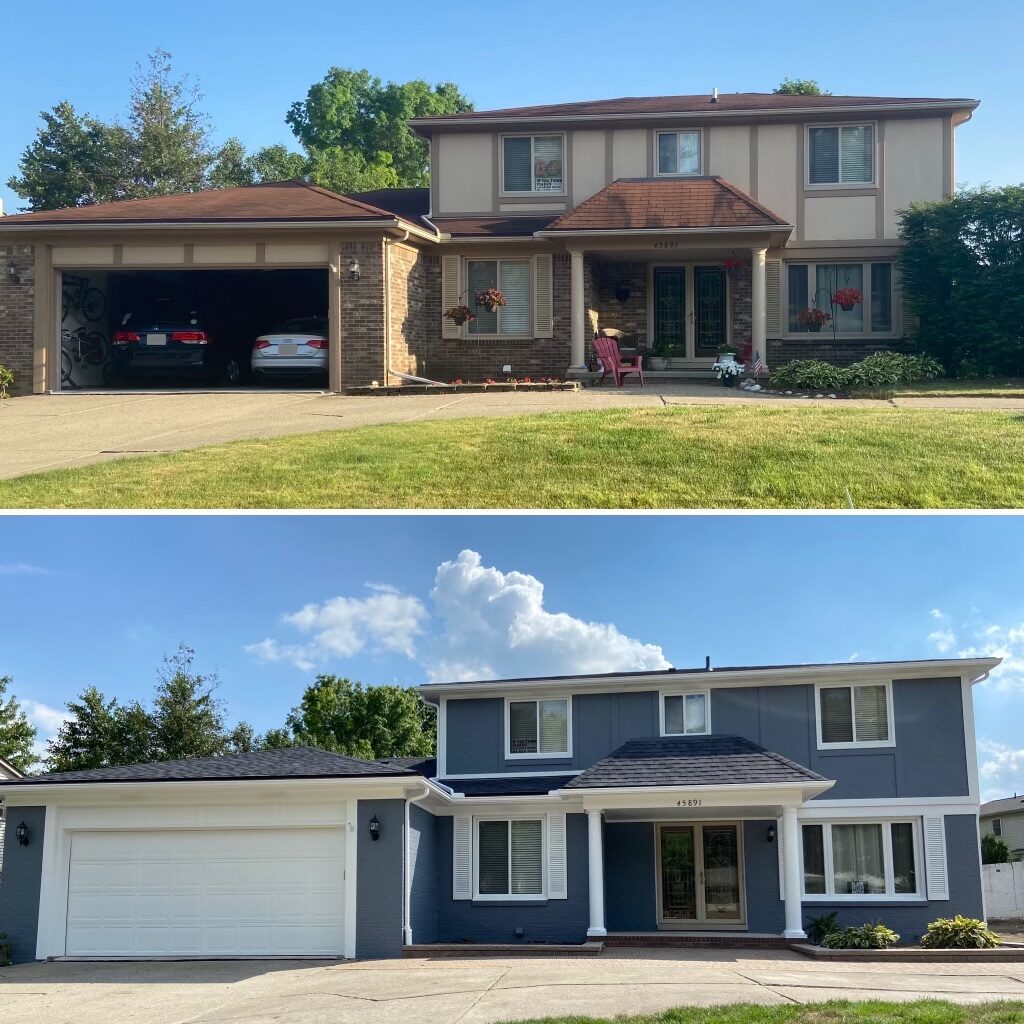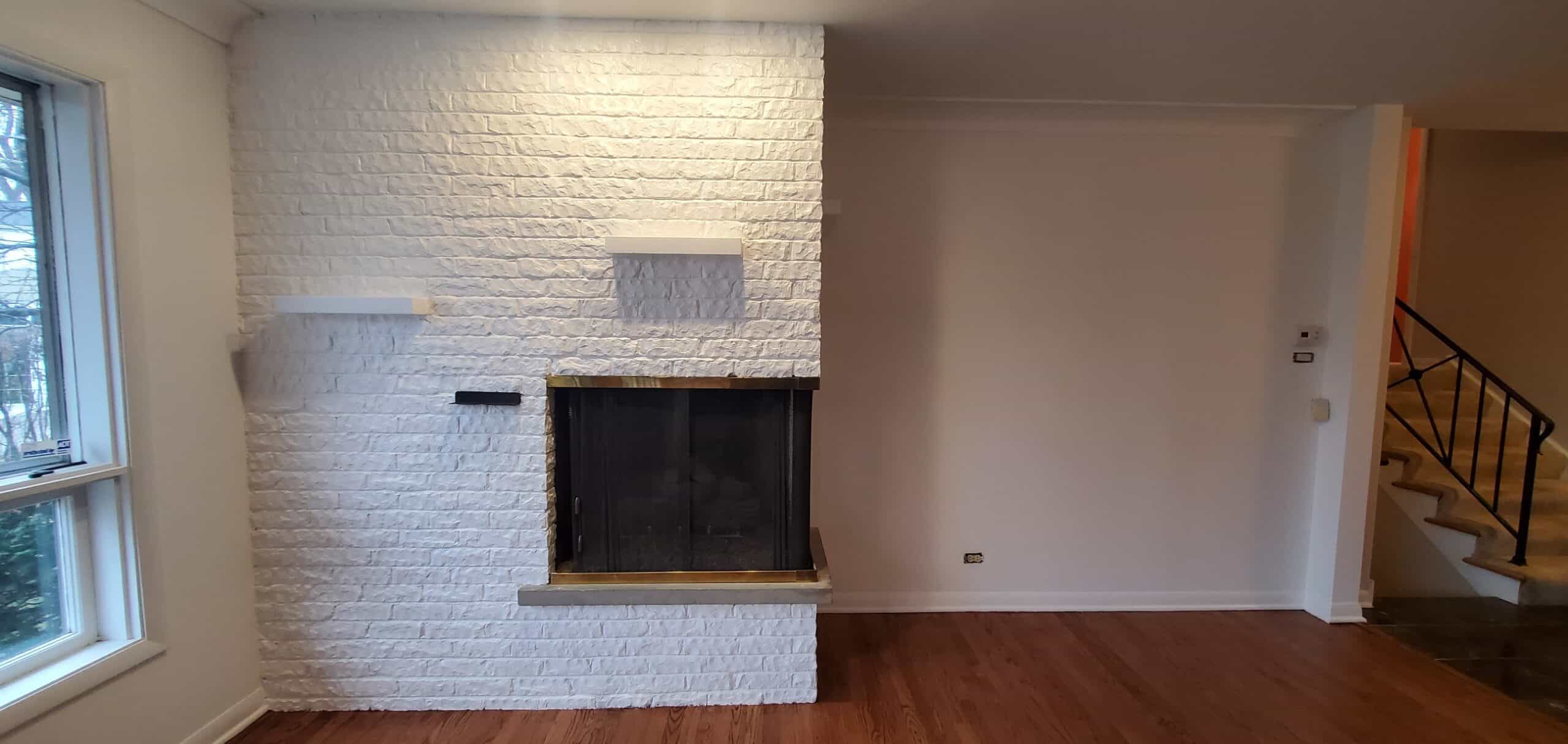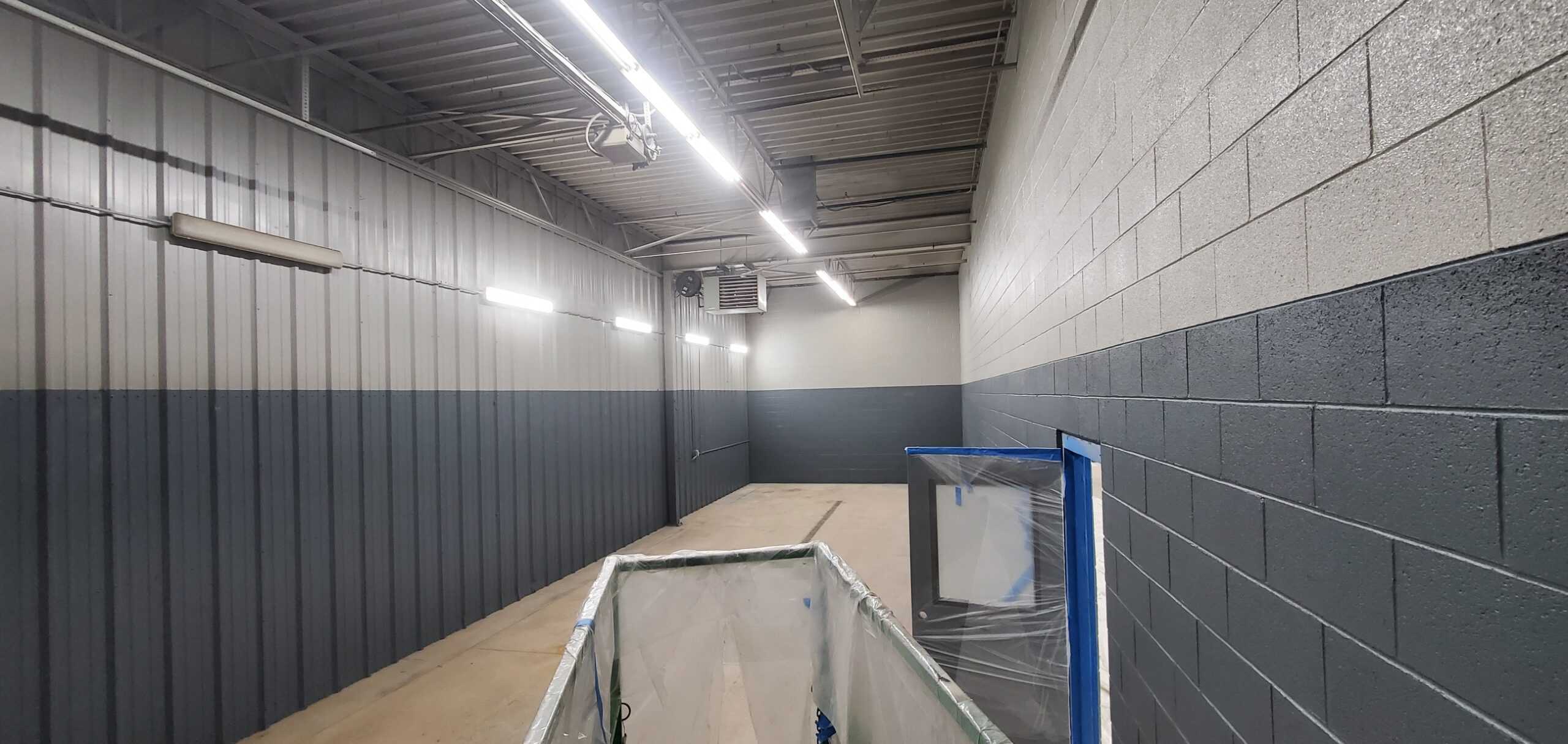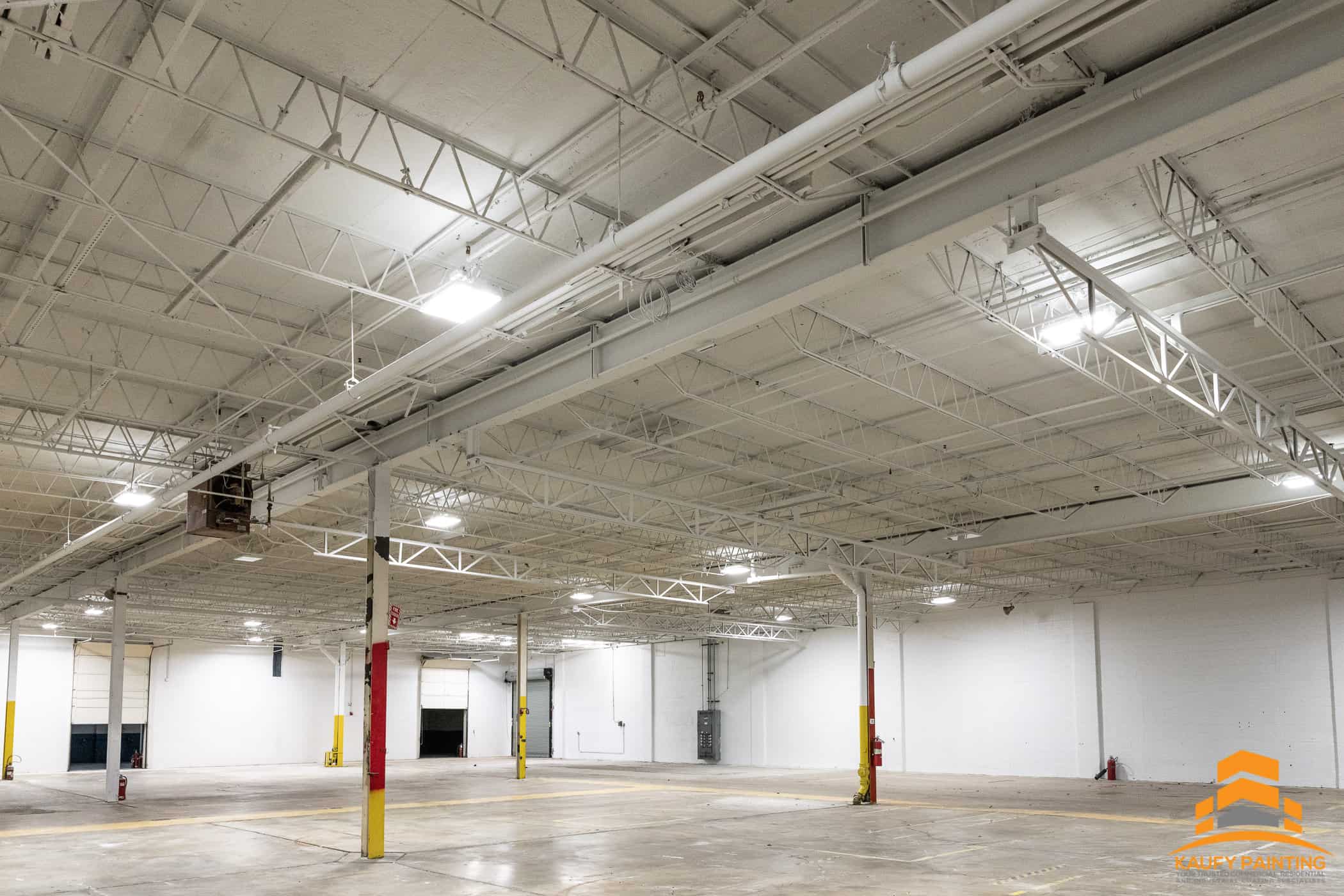Are you located in Northville, MI, or the nearby areas and thinking about giving your home a fresh look?
Whether you’re still debating which shade to choose or you’ve already picked out the perfect color, the urge to begin the makeover and boost your home’s curb appeal is understandable. But hold on a second—timing is everything when it comes to painting. Knowing the best time to paint exterior of house is important for ensuring that your new coat of paint looks its best and lasts as long as possible.
This article will cover the essentials to help you get the most out of your exterior house painting project. In the next sections, we’ll guide you through the best time to paint exterior of house, ensuring that it does not only looks fantastic but also stands the test of time.

Planning the Best Time to Paint Exterior of House
When you decide to paint the exterior of your house, choosing the right time can make all the difference. Let’s break it down into easy steps so you can ensure your project is as perfect as your vision for your home.
1. Check the Weather
Ideal Conditions:
- Temperature and Humidity: The best days for painting are those with mild temperatures and low humidity. Extreme conditions—be it scorching heat or freezing cold—can mess with the way paint dries, leading to less than ideal results. Aim for a day that balances these elements to help the paint adhere and cure properly.
- Dry Weather: More than just checking for a rain-free day, make sure the forecast is clear for at least 24-48 hours before and after your planned painting day. This precaution prevents rain from compromising the quality of your paint through washing or causing it to bubble.
2. Optimal Seasons
- Spring and Fall: These seasons are typically your best bet when painting your home’s exterior. Because they usually offer the kind of weather you need: mild temperatures and minimal rainfall. This combination allows paint to dry and set as it should, ensuring durability and a beautiful finish.
- Local Climate Variations: Keep in mind that the ideal time might vary based on where you live. Some areas experience longer dry spells at different times, perhaps in early summer or late fall. It’s essential to consider these local peculiarities when planning your project.
3. Timing Your Day
- Start Early: The best time to paint exterior of house and start painting is early in the morning. This strategy isn’t just about beating the afternoon heat; it’s about utilizing the full strength of daylight. Starting early means you have plenty of time to let the paint dry during the warmer, brighter parts of the day. This is essential for avoiding evening dampness, affecting the paint’s curing process.
- Avoid Dew: Morning dew might seem harmless, but it can actually interfere with the quality of your paint job. Dew on your painting surface can dilute the paint and affect adhesion. Make it a point to start painting only after the morning dew has completely evaporated. This ensures that the paint adheres well and dries uniformly.
4. Exterior Paint Type
When you’re gearing up to refresh the exterior of your house, knowing your paint type is as important as choosing the best time to paint exterior of house. Latex-based paints vs oil-based paints behave quite differently, especially when it comes to how they react to temperature and drying times. For a flawless finish, it’s essential to pick a paint that aligns with your project needs and the local weather patterns.
Latex paint is often the go-to choice because it dries relatively quickly—usually within about three hours between coats. This quick drying time can be a huge advantage if you’re pressed for time or if the weather forecast is a bit unpredictable. However, to really ensure that everything goes smoothly, it’s best to paint when the weather is mild, as extreme temperatures can affect the drying process and overall finish.
On the flip side, oil-based paint offers a robust and often glossier finish but requires patience. It takes much longer to dry, sometimes up to a full day between coats. This means you need to be extra sure of good, dry weather for a longer stretch. If you choose oil-based paint, planning around the best time to paint the exterior of your house becomes even more critical, as you’ll want several clear days in a row to avoid any painting pitfalls. Always check the manufacturer’s guidelines to maximize the effectiveness of whichever paint type you choose, ensuring your home looks stunning for years to come.
5. Prepare in Advance
- Surface Ready: Preparing the surface is as important as the painting itself. Before you even open a can of paint, make sure the exterior walls are clean, dry, and free from peeling paint or mildew. A well-prepared surface not only makes the application smoother but also helps in achieving a lasting finish. It’s the foundation of a great paint project.
- Tools and Paint: There’s nothing more frustrating than realizing you’re short on supplies mid-project. To avoid unnecessary interruptions, gather all your tools and materials the day before. This includes brushes, rollers, ladders, painter’s tape, and, of course, the paint. Having everything at hand saves time and keeps the momentum going, making your painting day more efficient and less stressful.
When Should You Not Paint the Exterior of Your House?
Painting the exterior of your house can be a rewarding project that spruces up your home’s appearance significantly. But you should know when to put the paintbrush down and plan for another day. Here are some key times when painting outside might not be the best idea:
- During or Before Rain: Wet weather is a no-go for painting. If rain is in the forecast or it’s currently raining, hold off on painting. Water can cause fresh paint to wash off or bubble up, leading to uneven coverage and potential damage.
- After Dusk: Painting in low light isn’t just difficult—it can affect the quality of your job. Cooler temperatures and dew during the night can also prevent the paint from drying correctly, resulting in a subpar finish.
- In Extreme Heat: High temperatures can cause paint to dry too rapidly, which might lead to a poor bond with the surface and visible imperfections like brush marks.
- Below 40 Degrees Fahrenheit: Cold weather can be detrimental to your painting efforts. Paint thickens and doesn’t spread well in low temperatures, which can impede proper drying and adhesion.
- During High Humidity: High humidity extends the drying time of paint, increasing the chances of dirt sticking to the surface and potentially leading to a tacky finish that doesn’t last.
Understanding the best and worst times to paint the exterior of your house is crucial. Timing your painting project correctly can be the difference between a headache and a stunning transformation, making it clear why knowing the best time to paint exterior of house is essential for any successful exterior painting project.
Wrapping It Up
Now that you know the best time to paint exterior of house, you’re all set to plan your painting project like a pro. Remember, the perfect timing can make all the difference in achieving that stunning, long-lasting finish.
If you’re in Canton, Plymouth, MI, or the surrounding areas, and you’re looking to transform your home or business, you don’t have to tackle it alone. At J&B Painting, we specialize in residential and commercial painting services, ensuring top-quality results with every brushstroke. Whether you’re updating your home’s exterior to boost curb appeal or giving your commercial property a fresh, new look, our team is here to help!
Don’t hesitate to call us at (248) 599-0996 for a FREE estimate. Let us take the hassle out of painting and help make your vision a reality with professionalism and precision.



